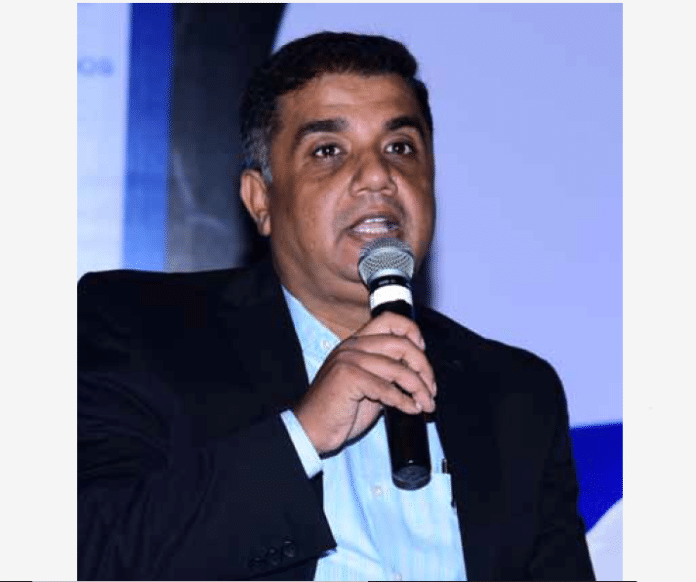Divyanshu Verma presently serves as the senior manager in charge of software development at Intel Corporation. He comes with a rich experience of working in leading tech companies like Ericsson, Broadcom, NetApp, Dell, and now Intel. He has a rich experience in AI, ML, cyber security, IoT, smart connected homes, Linux, embedded Linux, device drivers, open source, DevOps, networking, automation, and so on.
In an exclusive chat with Sreejani Bhattacharyya of OSFY, Verma talks about his professional journey and what it takes to make a career in open source.
Verma was first introduced to open source way back in 1999 when he accidentally got a Linux distro CD while reading a magazine named ‘Dataquest’. He started browsing it out of curiosity, and was amazed at all the tools and the open source software that was available inside for free. He said, “I was especially curious about operating systems and with Linux in my hand, I got everything I had ever dreamt of, such as kernel source coder, a free C compiler, Vi editor, etc.”
Since then, Verma has been hooked to open source. He says that his interest in open source was handed a boost when he got the entire kernel code on Linux, as he could now understand the fundamentals of how an operating system boots – especially about how a kernel switches from physical memory to a virtual memory system.
Verma feels that these concepts were purely academic for him before he got the Linux CD.
“However, with the open source Linux OS in hand, I got a lifetime opportunity to learn and experiment concepts such as memory management, device drivers, file systems, etc,” he adds. In a career spanning over 20 years, Verma has since worked on kernel development, cloud computing, cyber security, networking and router development, file system development and IoT, among others.
The challenges and the solutions
But this long and successful career has come with a fair share of challenges. He says, “The biggest challenge is to keep pace with the changes that happen in open source software. The amount and pace of open source software development is faster than any of the other model of software, and as a result of this speed, the adoption, contribution, and consumption has to be at a similar pace.”
Another challenge that Verma feels he faced was the integration of proprietary software with open source software. This is due to the fact that open source software is always miles ahead of proprietary software and that there is always a community of developers backing one up.
“On the other hand, open source software often lacks good and verifiable documentation, which usually comes as a big challenge in the middle of projects with strict deadlines,” Verma informs.
With challenges come solutions too. He says that the only way to solve these issues is to interact regularly with the open source community and to participate in community discussions. According to him, it is very important to keep close contact with the relevant community in open source. This helps a great deal when it comes to problem-solving.
“The other important suggestion is to contribute towards the challenges or issues faced by other members of the open source community, and document the changes in a manner that the usage of software becomes easy for other developers,” Verma adds.
Lack of documentation and open source code contribution
When asked what were the biggest hurdles he faced and how he braved through them in his career, Verma says, “There have been hurdles – and if I have to rank them in order, then the lack of documentation regarding implementation details of any open source component has been the biggest challenge. In a majority of projects where there is an open source component, lack of good documentation has a big impact on the time and schedule.”
Further, the availability of a good test bench related to a particular functionality is either absent or not easily available most of the time. Due to this, testing the functionality of a product becomes way more tedious than the effort needed to develop it. A way to resolve this issue is to completely come out of the waterfall model of development and go agile.
“Last but not the least, since India does not have open source code contribution generally, it has been difficult to carry out some projects. However, over a period of time, once the awareness around open source contribution increases, this challenge will go away,” Verma opines.
The best teams are found in the open source community
Verma points out that the biggest learning in terms of working in open source has been the power to implement any software without any barrier or restriction. He says that open source has democratised software development and has paved the way for the largest community based development. He feels that be it Linux, OpenStack or Python, the best and the largest teams of professionals are always found in the open source community.
Verma adds that his biggest motivation to contribute towards open source has been to propel the learning and development of software that can be used by anyone and everyone irrespective of geographical location, financial status and any other bias or limitations in society.
He says, “OSS has been the biggest innovation platform of its kind, where millions of entrepreneurs and gurus have learned the necessary skills and concepts. By contributing towards OSS, I just give back to a community that has taught me. In other words, it is my ‘guru dakshina’ to the open source community.”
Use and understand the community ethos
As someone who is highly successful in this field, Verma has a few tips to give to anyone starting out.
He says, “My advice to any youngster who wants to become a pro in open source technology is to use and understand the community ethos, interact with the community, and take up any task. This will help them build a rapport in the community and make a mark. The more they contribute, the more they will earn respect and will become an asset. This will ultimately help them meet many great developers and professionals of the community who are otherwise completely out of reach for young developers.”
Need to increase content contribution appetite for open source
With respect to the Indian open source ecosystem, Verma says, “The Indian ecosystem for open source is known for its huge consumption capacity for open source components. However, the contribution towards open source projects needs to increase multifold, and participation in open source decision-making bodies needs to increase. Last but not the least, academic institutions need to increase the usage of open source products and also motivate students to contribute to open source projects.” In India, there is a need to increase content contribution appetite for open source, create unique projects, and drive the community from a leadership perspective. According to him, Indian corporates and the government need to support the open source community by sponsoring new projects, organising hackathons, bug bounties, and so on.










































































